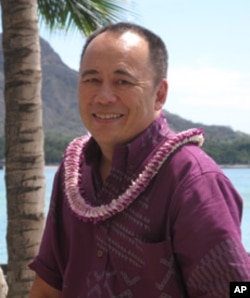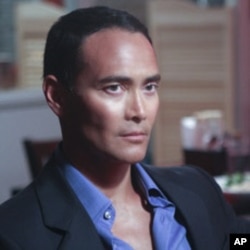For many years, actors whose ancestors came from Asia and the Pacific Islands landed few major roles in Hollywood. And when they did appear, they were often typecast. But recently, the face of Asian Pacific Islanders in film and TV has been changing.
In a recent documentary, “To Whom It May Concern: Ka Shen’s Journey,” actress Nancy Kwan looks back on her life. Ka Shen is her Chinese name. She was born in Hong Kong to a Chinese father and English-Scottish mother.
Kwan made her acting debut in 1960, in "The World of Suzie Wong." She was one of the first Asian actors to star in a Hollywood film.
"When I started out, it was really just the beginning of producers realizing, 'Hey, we’d better use an Asian to play an Asian role,'" Kwan says. "Because in the old days, Asians were played by Caucasians, Caucasian actors."
A year later, Kwan went on to star in the hit musical, "Flower Drum Song." She played Linda Low, a nightclub singer and dancer.
"I loved 'Flower Drum Song' because it was the first film made with an all Asian cast in a huge Hollywood film."
These days, Kwan says, Asians are still not getting enough substantial roles. But as more writers, directors and producers of Asian Pacific ancestry continue to work in the film industry, that's changing.
"We’re in a lot better place and we’ve got a ways to go," says Hollywood film producer Chris Lee, pointing out how different the situation is today compared to 50 years ago.
For example, in the 1961 movie, "Breakfast at Tiffany's," starring Audrey Hepburn, Mickey Rooney, a white actor, played her Japanese neighbor. And many of the Asian characters in the movies back then reflected negative stereotypes.
"If you think back to some of the traditional ways that Asians have been portrayed on the screen - "Breakfast at Tiffanys," "Sixteen Candles" - Asian characters tended to be joke characters," Lee says. "They tended to be comedic characters at best, but very often actually, the butt of the jokes."
As the war in Vietnam escalated in the 1960s and 70s, Kwan says roles for Asian actors declined. The situation began to change after the fighting ended, and as major feature films from China and other parts of Asia began appearing in U.S. theaters. Americans got used to seeing Asians in leading roles on the silver screen, and that helped Asians in Hollywood.
"What's happened today, is we actually have heroic figures," Lee says. "We actually have characters that are fully developed."
He believes a number of films, from "The Joy Luck Club" in 1993 to 2002's "Better Luck Tomorrow," helped pave the way.
There are more good roles for Asian Pacific Americans - mainly in television.
Grace Park and Daniel Dae Kim both star in the new "Hawaii Five-0" on CBS.
"The simple fact of the matter is, there are fewer jobs for Asian American actors than there are for Caucasian actors," Kim says. "So to have a role like this one, I think is a huge step forward."
Mark Dacascos is also a regular member of the cast.
"I’m Japanese and Irish from my mother’s side, and Chinese, Spanish, Filipino from my father’s side. Initially, I wasn’t Asian enough, I wasn’t white enough, I wasn’t Hispanic enough," he says, recalling the difficulties he encountered at the beginning of his career. "So it was very difficult. Now, more people of diverse backgrounds are becoming writers and producers. It is opening up a lot more than it has been."
While these industry insiders say more should be done to advance Asian Pacific Americans both in front of and behind the camera, the younger generation isn’t waiting. Some are bypassing the gatekeepers in Hollywood, starring in their own videos for the Internet and YouTube, and connecting with a worldwide audience.









